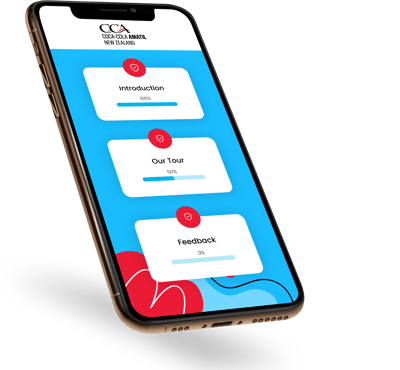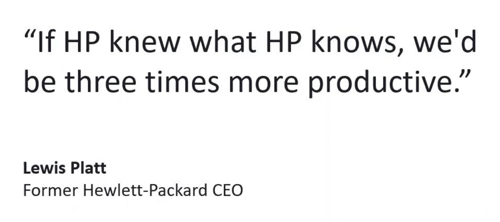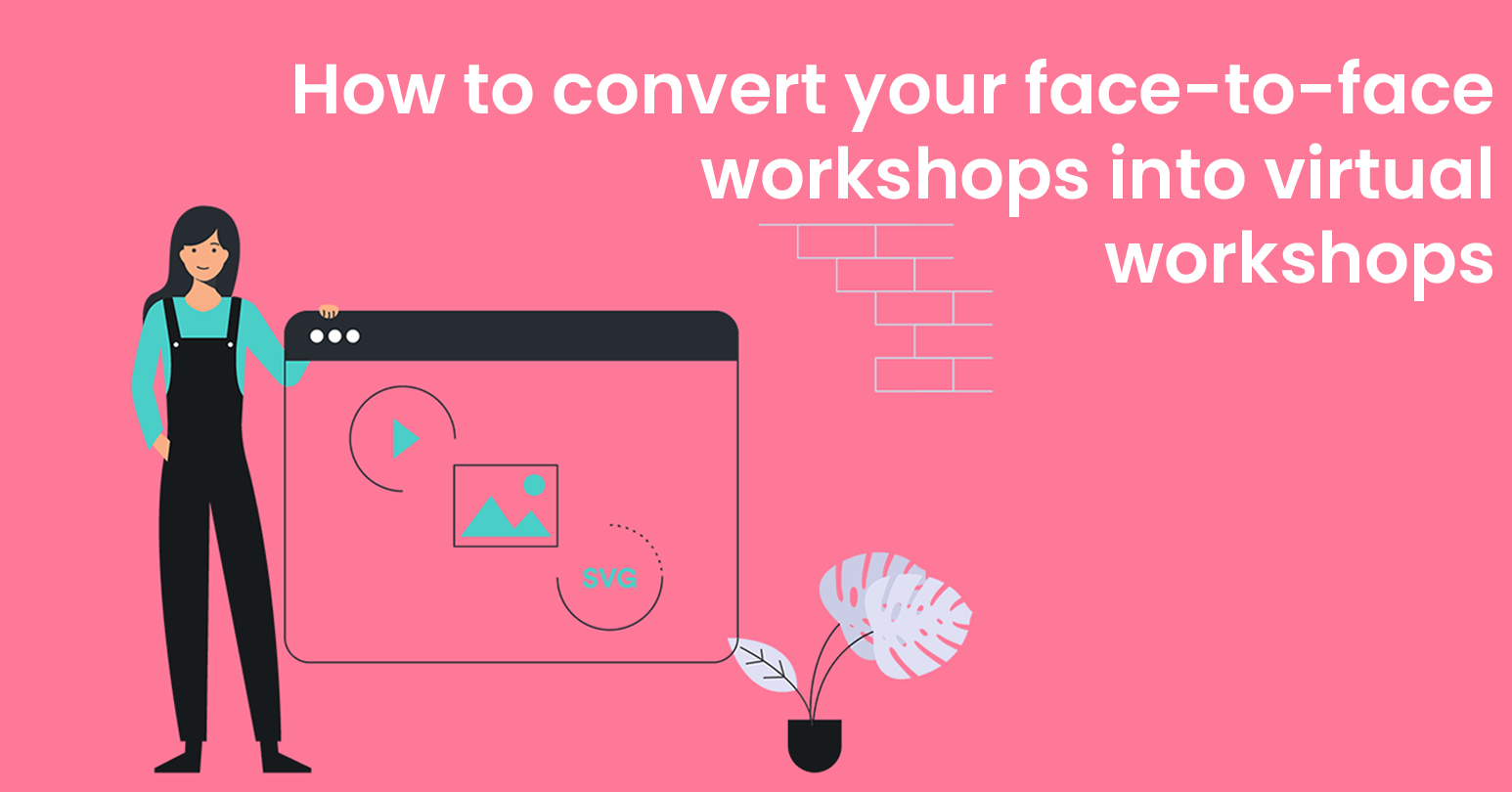Save time and money by empowering your SMEs to create their own eLearning
Increased demand on Learning and Development (L&D) teams to create elearning modules
It's becoming increasingly challenging for L&D teams to keep up with learning content demand from the business. Most L&D teams aren't created to be 'content factories' churning out mass amounts of learning resources day in, day out. They are there to make strategic decisions, to consult with the business to improve performance, increase awareness on certain issues, improve culture and change behaviour. But as business demands for training materials increase, so does the pressure to push out more and more content to meet these expectations from business leaders. So how do you meet these demands?
When L&D teams can't keep up with demand
Because creating eLearning has historically been 'tricky' and required expert technical knowledge and training, many L&D teams would outsource when they couldn't meet demand. Typically they would hire L&D contractors or freelancers, and also learning agencies, to help them create learning content. In particular, external resources were sought when eLearning modules were required, because there was no in-house capacity to design and develop them. This approach although effective, can end up being very costly.
Another option would be to source pre-made content or 'off-the-shelf' eLearning modules. But, this sort of content has never been ideal and is not always the best option as many of these eLearning modules are created offshore and the content is never perfectly relevant to an individual organisation.
Hiring an external agency or freelancers can be time-consuming and expensive, and buying ready-made modules doesn't always hit the mark.
So, what's another option?
Stakeholders are creating eLearning content themselves
Over the years, the L&D industry has changed dramatically and demand for content has grown exponentially, with rapidly changing business structures, decentralisation and higher expectations from audiences to generate more and better quality learning. This increasing demand for content is showing no sign of slowing down, so L&D teams must adapt.
An increasingly popular solution has been to equip in-house Subject Matter Experts (SMEs) with the knowledge and tools to create their own learning materials. You may have heard this referred to as 'employee-generated learning', 'democratised learning' or 'user-generated content'. The basic idea is to empower SMEs or stakeholders to create their own learning resources, instead of being dependent on L&D or HR teams. We are seeing more and more organisations adopt this strategy, to democratise learning content creation, and take the pressure off the L&D team, allowing them to focus on more strategic initiatives.
Our friends over at ShowHow have some great thoughts on this too, especially on collaboration in scenario-based learning.
How can empowering SMEs to create their own content save time and money?
Let's imagine you have a Health and Safety manager called Alex... Alex has been running a 2-hour presentation every week for the last 6 months to induct new contractors into their site safety processes. With just a little direction from the L&D team, Alex could instead create their own learning module for the contractors, which would save heaps of time each week, and prevent the L&D team from having to add another module to their backlog.
A great example of this is when Coca-Cola first came on board with Chameleon.
During the first COVID-19 lockdown in New Zealand, Coca-Cola decided they wanted to better support their people leaders through a challenging time, so scoped out a series of short online modules to be created, that could be accessed anytime, on any device.
Initial quotes from service providers were approaching 6 figures (and were estimated to take approximately 2-3 months to create). So Coca-Cola decided to take a different approach, and trial Chameleon Creator to build the modules in-house.
Within 6 weeks, their stakeholders (with no experience using authoring tools), had developed all of the modules, in Coca-Cola branding. The modules were created and deployed through their learning management system (LMS), for a fraction of the cost quoted by their service providers.

"At Coca-Cola, we've been using Chameleon to build compliance modules, sales courses, and induction modules. We've found the tool very easy to use and allows us to build courses in hours, not days. We like that Chameleon interfaces with all the devices our people are using and have received great support from the Chameleon team."
Coca Cola Learning and Development Manager
Capture the latent knowledge and skills in your organisation
Getting your SMEs to create their own content will save you time and money, but also gives you a way of capturing knowledge and experience already present in your organisation. We have an ageing workforce, and a lot of valuable insight is being lost unnecessarily. Modern technology gives us the tools to capture all of this valuable experience and knowledge, which traditionally has been difficult to regain when SMEs leave. The quote below sums this up perfectly.

How do you get SMEs to create good eLearning?
So you're convinced having your SMEs generate learning content themselves is a win-win idea... But, how do you get someone with no experience in learning design started?
If you plan to adopt this strategy, it would be wise to have some healthy processes in place first, for quality control, and to upskill the SMEs in basic learning design first.
So check out some of our tips below:
5 tips to empowering SMES to create their own eLearning
1. Initial briefing session
When a SME wants to create a new module, or however the learning need arises, have the SME book in a session with the L&D team and together fill in a learning needs analysis or learning brief. This should cover things such as who is the module for, what's the need, what's the best way to deliver it, etc. This essential step in the process will ensure everyone is on the same page and it's clear what the requirements are and what business problem the eLearning module will solve.
Want a eLearning brief template? Download our word doc template here:
2. Have the right tool and provide training
Traditionally eLearning development tools weren't very user friendly and required specialised training and technical skills to master. But as learning software has evolved, so has its ease of use by non-learning experts. Chameleon Creator was built with a clear focus on ensuring the learning platform provided users with three key benefits -fast, easy and beautiful. The tool is very intuitive and easy to learn how to use without any special training required. Modules can be built quickly and with one-click be previewed and published, allowing even novices to test their modules quickly for rapid development. The fact that the modules are beautiful is a huge bonus. It's hard for non-experts to mess up the design and not having any design skills shouldn't impact on the final output.
But like any tool, no matter how easy it is to use, it is still possible to muck it up. So we do recommend some training on how to use the tool, and also provide resources so SMEs can help themselves if they get stuck. For example, with Chameleon Creator we have the Chameleon Quick Start Guide article, and the Interactions Guide to get your SMEs up to speed on the essential skills quickly. You can also supply them with links to the Knowledge Base Library that contains all the how-to articles and videos to help build all the assets and interactions they may require to create a great eLearning module.
3. Provide eLearning design basics
Give SMEs some kind of basic guide on best practice in eLearning design. Have a module or general guide in place that simply teaches the SME some best-practice learning design tips. A SME is never going to need to produce an elaborate learning needs analysis, but they need to know just enough of the basic principles so they don't create something that completely misses the mark.
Download our Chameleon module to teach your SMEs about eLearning design basics, how to build an eLearning module and some simple principles of learning design.
4. Have a branded template and examples
You want to make it as easy as possible for your SMEs to get started and not have to worry about design elements or branding. Before they get started, ensure they have a branded eLearning template with all the logos, colours, illustrations and fonts preloaded so they can just worry about the content. Also share with them some really great eLearning modules as examples to inspire them.
5. Have a quality assurance process in place
Have some kind of quality assurance process in place so that when a SME has completed their eLearning module, they can book in a review session with the L&D team. The L&D team can then peer review and QA the module, offering feedback and guidance for any updates and edits. This ensures the final product meets your L&D team's standards and that there aren't too many rogue eLearning modules in circulation that will give employees a bad experience. It's also a chance to upskill your SMEs so their next module is even better.
Summary
Empowering everyone in your organisation, and especially your SMEs, with the skills to create their own eLearning is a great strategy for saving time and your all-important L&D budget. It is also becoming a much more popular strategy amongst many L&D teams. The demand for content seems to only be increasing, so implementing this approach will set you up to meet current and future learning content demands.
Getting SMEs to create their own learning not only benefits L&D teams, but also small-to-medium-sized businesses that don't have an L&D team or HR department and want to get stuck in and create eLearning modules for their staff. So, wherever you and your organisation sit on the spectrum, this strategy will be of massive benefit and take pressure off just a few individuals from being responsible for all the learning content development and knowledge sharing.
Download our free eBook
How to harness the smarts of your subject matter experts to make creating learning content faster and more affordable. Download our free eBook, The L&D Guide to Democratising Learning Content Production and get started with your user-generated content strategy.
Share this
You May Also Like
These Related Stories

Accessibility in eLearning Design

How to convert your face-to-face workshops into virtual workshops




